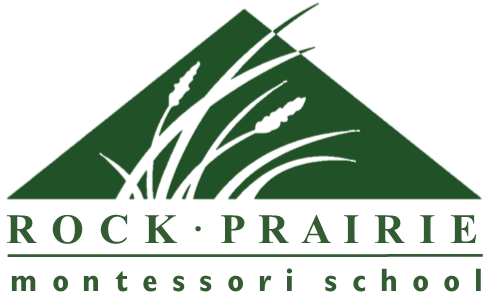Spanish
Spanish lesson with Children’s House (ages 3-6)
Ages 3 years through 8th Grade
Rock Prairie believes that exposure to foreign language learning is of critical importance in meeting our goal for students to become informed, engaged, and caring world citizens. Students engaging in learning a second language not only open themselves up to communicating with others around the world, but, ultimately, they learn more about how they themselves communicate and operate in this world in the process.
Maria Montessori believed that the way to educate the whole child was through their exposure to as many areas of life, nature, people, and places as possible. The child’s absorbent mind, she professed, would take all of this in and use the knowledge to create the developing human being, one that could change mankind. Learning a second language fits into this philosophy in a fundamentally natural and logical way.
Methods - Rock Prairie uses purposeful and intentional methods which help the child to gain as much exposure and proficiency as possible within its language lessons. The target language is used as much as possible to maximize each class time period, knowing that to be meaningful, some activities must be explained in the native language. The usage of the student’s native language is minimized and is decreased gradually.
Spanish class periods typically begin with a short period of conversation on topics that would normally present themselves in any pleasant conversation: introductions, feelings, calendar, and the weather. There is then typically a line time lesson, in which students are presented with new language concepts, including nomenclature and grammar. (First period lesson). Students are then involved in some games to practice and repeat these new concepts visually, auditorily, and sensorially. (Second period) Finally, students will complete reading and writing activities in support of the presented lesson. The guide will engage in some conversation with the students to demonstrate some proficiency. (Third period).
Emphasis is not on perfection, but rather practice and repetition. Importance is placed upon the creation of an environment where the children can feel very comfortable trying out their new second language. Within the program, students will have exposure to listening activities, partner collaboration, small group work, and use of manipulatives.
Intermittent in the program is some cultural lesson presentation. This will include focus on the Spanish- speaking countries around the world, as well as customs and traditions. For these studies, a multi-faceted approach is used: literature, audio-visual resources, and art projects could be part of the approach to learning cultural topics.
Each level of study will base its placement of students on coordination between the classroom teachers and the Spanish teacher to determine appropriate level matched with readiness skills.
Materials -A combination of materials are used to support second language learning: Teacher-created language materials, Montessori Spanish series materials, Muy Bien Spanish curriculum series (Children’s House and Lower and Upper Elementary), Descubre Spanish curriculum series (Middle School), web-based resources, literature, and manipulatives.
Expectations of the RPMS Spanish Learning Program - Expectations of the program vary by developmental level, but the primary goal remains the same: to provide students with high quality instruction and exposure to the Spanish language, results of which will be demonstrated by the students within the classroom setting. As students progress and grow, their confidence, and ability to communicate what they are learning will grow. Typically, second language learners will show high levels of receptive language and lower levels of verbalization of language for quite a long period of time.
Young children especially may not be able to demonstrate the knowledge they have accumulated right away outside of the classroom setting; this would be typical of any curricular area. Spanish class is a special setting and they may demonstrate verbally much more inside of that environment than outside of it. It can take years for a child to transfer knowledge gained within the setting to an unfamiliar outside setting. Much of their acquisition may be internal, but, rest assured, it IS there! Parents may hear children verbalize a lot, or very little. This is all normal as a child begins their second language learning journey.
An older child (Upper Elementary and Middle School), generally will be able to feel more confident to verbalize more. This will also vary on the personality and confidence level of each child. An older child WILL be able to show very high levels of receptive language and very high levels of written language in the Spanish language.

